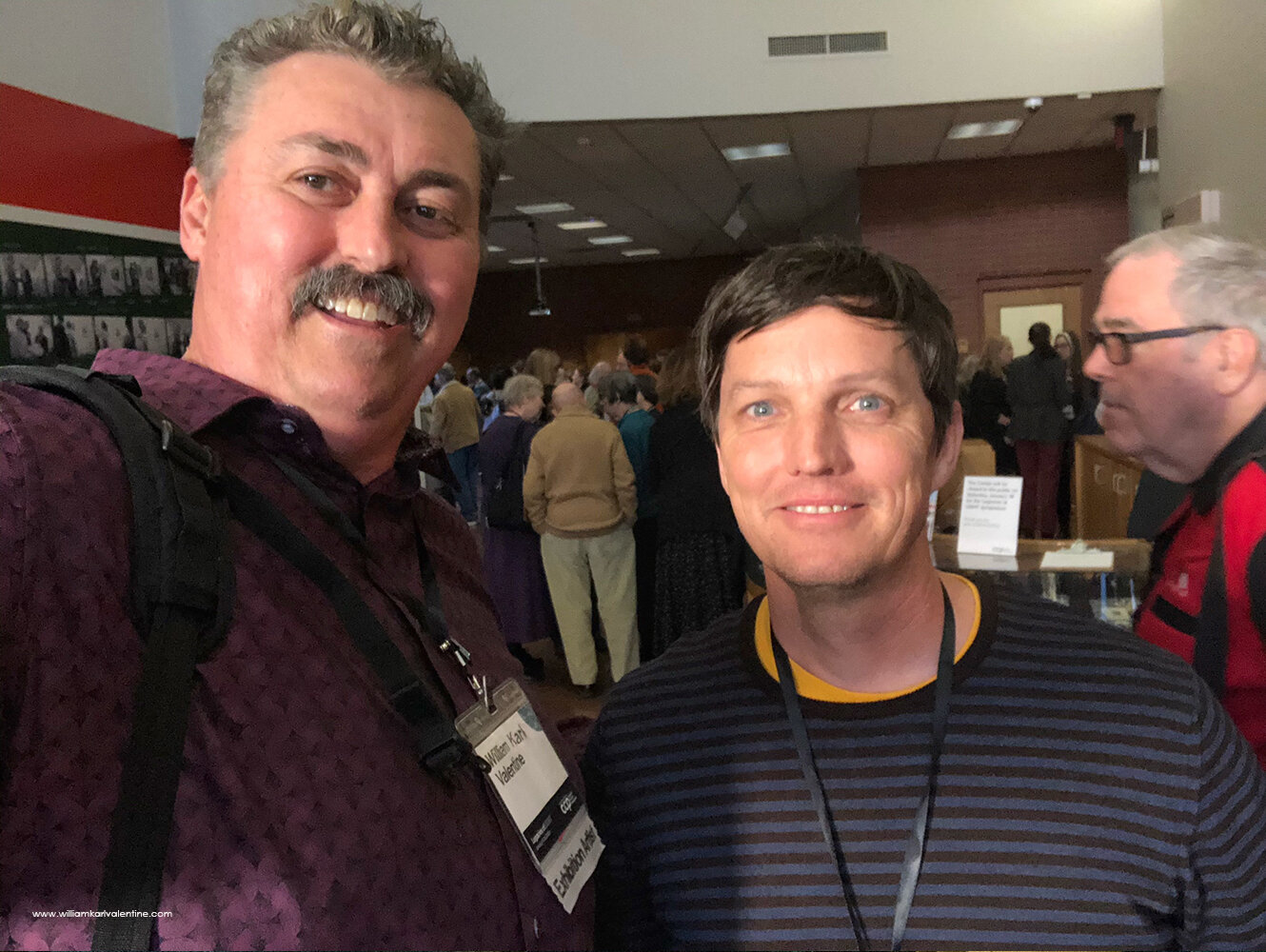I am proud to announce that six of my photographs have been selected for the Atlanta Photography Group’s “Portfolio 2023” exhibition, which opened Tuesday. I am especially honored that Shana Lopes, who is the Assistant Curator of Photography at the San Francisco Museum of Modern Art was the juror for this exhibition. Only eight photographers were selected, and one of us will have their photographs placed into the permanent collection of the prestigious High Museum in Atlanta from the purchase award associated with the exhibition.
This is my sixth Atlanta Photography Group exhibition, and this is the first time I have had my work selected for their portfolio exhibition. This is a significant career moment for me because the APG Portfolio exhibition is so competitive and always judged by a renowned curator. I am once again thankful for Donna Garcia and the staff at APG for all their work organizing this exhibition and securing Shana to make the selections. I am also thankful for the APG board, staff (Nicole LeCorgne), and community for building the best photography organization of this kind in the country. I am also excited about APG’s future with the addition of David Clifton-Strawn as APG’s new Executive Director.
Photographs in the exhibition
Background Information about the images in the exhibition:
“Welcome to Hell” (1985) – Bill Walton was an outstanding street cop. Where all the young officers wanted to work in the action-packed area with the gangsters and rock cocaine sales, Walton was happy working in the slower East side of the Pasadena. He wasn’t lazy in fact he had to work harder to get his arrests than officers in the busy areas. I remember how Walton would hunt vehicle burglars hitting the cars in the restaurant and theatre parking lots of his area. He had a number of hidden lookout spots where he could sit with his binoculars scanning the lots for thieves. He made lots of self-initiated arrests because he cared about protecting his beat. His clipboard has his unit call sign (“3L41” - signifying Swing shift, solo officer car, Beat 4, and the first unit in that beat, usually he was the only officer on that end of the city) and “E.S.P.” (Copying the East Side Pasadena gang graffiti), as well as the bumper sticker.
“Bus Ride” (1986) - Every New Years Eve, officers would get dressed at the old police station then get bused the half mile over to the convention center for the large briefing of all personnel working security along the route of The Rose Parade. Over a million people come to watch the parade each year, many of which camp out overnight and like to celebrate New Years Eve. Some areas of the route are calm and other areas were known to be rowdy every year. The buses used for these trips were Los Angeles County Sheriff inmate transportation buses. I always thought the contrast between the gang graffiti etched on the roof of the bus and the police officers added a lot to this image. I also love how this image captured the comradery of the officers and diversity.
“Report Writing” (1985) - Documents the unglamourous part of law enforcement you never see in the movies or TV shows, having to write reports. Back then everything was handwritten or typed by the officers. Lots of white out and erasers. I chose a different angle to showcase how much paperwork actually have to deal with. The images also lets the viewer see how unglamourous the report writing area was.
“Dusting for prints” (1986) – I learned so much about the profession while photographing at Pasadena PD that I would later use in my own career as a Police Officer and Detective at Chino PD. As I was photographing Calvin Pratt, he taught me to always dust the center review mirror on recovered stolen vehicles because everyone always adjusts the mirrors the first time. He said most car thieves would wipe down the stolen cars when abandoning them but often would forget to wipe down the center mirror. Auto theft investigation would later become one of my areas of expertise’s at Chino PD.
“Gang Card” (1995) – Foremost this image documents the era when law enforcement was encouraged to do more gang enforcement to combat rising crime in Southern California. There are a few layers in this image, the gang tattoo, which was hidden at first, the subject looking away avoiding eye contact and the posture between the officer and the subject.
“Domestic Violence Suspect” – (2022) Last year the Chief of Police at Chino PD asked me if I would be willing to come back and photograph officers out on patrol again and I immediately told him I would. A couple years ago I had decided it would be good to photograph this current era of Law Enforcement so I could document the changes within the profession in my time. With the pandemic I had not found the right opportunity yet. This image documents something that unfortunately never seems to change, domestic violence. The man in the back seat of the unit is a domestic violence suspect who allegedly got drunk and slugged his wife in the face during an argument. When the first officers arrived, he resisted arrest and a crowd formed in the apartment complex prompting officers to have to call for a “code three back” for more assistance. After being handcuffed the man refused to walk to the police car and had to be carried to it by officers. The man’s brother, whom he had been drinking with, said the man resisted arrest because was afraid the arrest would hurt his ability to lawfully immigrate to this country. If I correctly remember the man and his family came to the United States from Nicaragua, crossed the border illegally, and were placed in this apartment complex while waiting for their immigration hearing about their asylum request.
Information about images in Previous APG Exhibitions (see below):
“Kevin Hall at the Do Dah Parade” (1985) – The Do Dah Parade is an annual event where people hold a spoof parade making fun of the Rose Parade. I think it still exists, but its popularity has waned, it was at its peak in the 80’s and 90’s. This image is a great document of the parade, but I also love the symbolism in it. Kevin was a big good-looking cop, who wore the uniform well. Here he is looking cool, calm, and collected in amongst a world of pandemonium. The image symbolizes what society expects from all officers but has little concept of how hard that is to achieve, especially in today’s world.
“Young Guns” (1986) – Pasadena PD Officers Hal Edwards, Matt Harrell, Mark Rangel, and Don Osterholt. These are Graveyard shift officers lined up in the hallway at the station waiting to check out their unit keys, shotguns, and portable radios. Law Enforcement Graveyard shifts inherently have many young officers because they have the least amount of seniority and can’t get a better shift yet. Younger officers often bring more energy, make more mistakes, and have lots of bravado. When I made the exposure I felt the image captured the invincible, fraternal, mindset many young Graveyard officers have. I also liked the fact this image documented the diversity which Pasadena PD had in the 1980’s. I gave this image the title “Young Guns” sometime later, with the inspiration being the 1988 Western movie with that title.
Related photographs which have recently shown at APG but are not in this current exhibition.
Artist Statement for this submission:
My father was a Reserve Police Officer with the Pasadena Police Department for over 30 years. I would go with him when he went to the station to drop off paperwork and he often stopped by our house nights he was on patrol. Because of this I saw my first dead body when I was about six years old, 1969. A hippie had overdosed, and his friends brought him to the emergency clinic next to the station, but he was already dead. MY dad took me over to his body in the VW bus and told me my first lesson about drug use. I remember the scene vividly to this day.
I started attending Arizona State University in the fall of 1984 as a Photography major. For a class assignment, I needed a documentary project to photograph during spring break. I came up with the idea of photographing the Pasadena Police Department and my dad made the arrangements so I could go on a series of ride-alongs to photograph. The first night I rode with a Sergeant who was a good family friend. He took me all over, introduced me to the younger officers, and he got me on scene of a suicide, a woman named Tina Hart who shot herself in the middle of the street. I immediately liked being in a police car and knew the access I had could lead to a powerful body of work. Northwest Pasadena in the mid 1980’s was crazy, lots of rock cocaine and gangs; the Bloods and Crips in Southern California were very active. When I got back to school the work was well received.
I continued the Pasadena PD series during the following summer. I quickly earned the trust of more officers and ended up becoming a technical reserve working in the photo lab during the day while still photographing on the street at night. Between 1985 and 1987 I spent over 1,000 hours on the street photographing officers with unlimited access.
When I graduated I did not want to become a press photographer, so I decided to become a police officer. I attended the Rio Hondo Police Academy and then became our class photographer which gave me more unique access. I was then hired by the Chino Police Department in 1987. I spent most of my career working Patrol with years in the Detective Bureau. I was medically retired in 2008 because of injuries. Working patrol photographed when I could but I obviously had to perform my duties first. Last year the Chief at Chino PD asked me to return and start photographing the department again.
This portfolio documents law enforcement during a period which is now being scrutinized by people examining ways to bring about change to our criminal justice system. I don’t know of any other photographer who had the access and vantage point that I did during this era.
Other Artists in the Exhibition
I am pleased that my work is being exhibited with the other photographers and lens-based artists listed below. Collectively their accomplishments include a Pulitzer Prize, multiple Photo Lucida Critical Mass Finalists, and photographs in many prestigious permanent collections. Four of us live in Los Angeles, two in New York City, and the rest live in the following: San Francisco, Indiana, Mississippi, and Jason is in the Midwest. Hopefully you will take a moment to follow these links and learn more about their work:
Aline Smithson Instagram Web Site Linktree
I first met Aline ten years ago at the Medium Festival in San Diego and she interviewed me for Lenscratch about my Santa Anita portfolio and book. Aline has also featured Justin Carney’s work twice in Lenscrach as an emerging artist.
Ashleigh Coleman Instagram Web Site
Denise Laurinaitis Instagram Web Site
Justin Carney Instagram Web Site Linktree
Preston Gannaway Instagram Web Site Linktree
Michael Young Instagram Web Site Linktree
Simone Lueck Instagram Web Site
& Alternate Artists: Diane Meyer and Jason Lindsey










